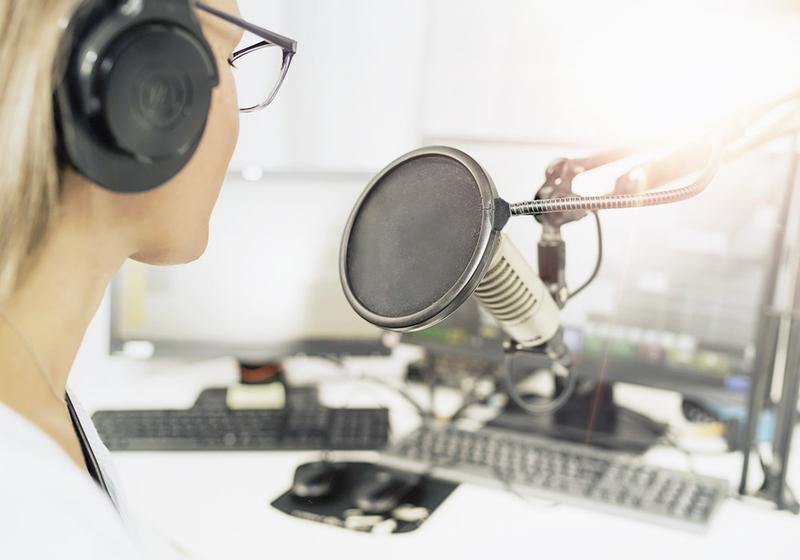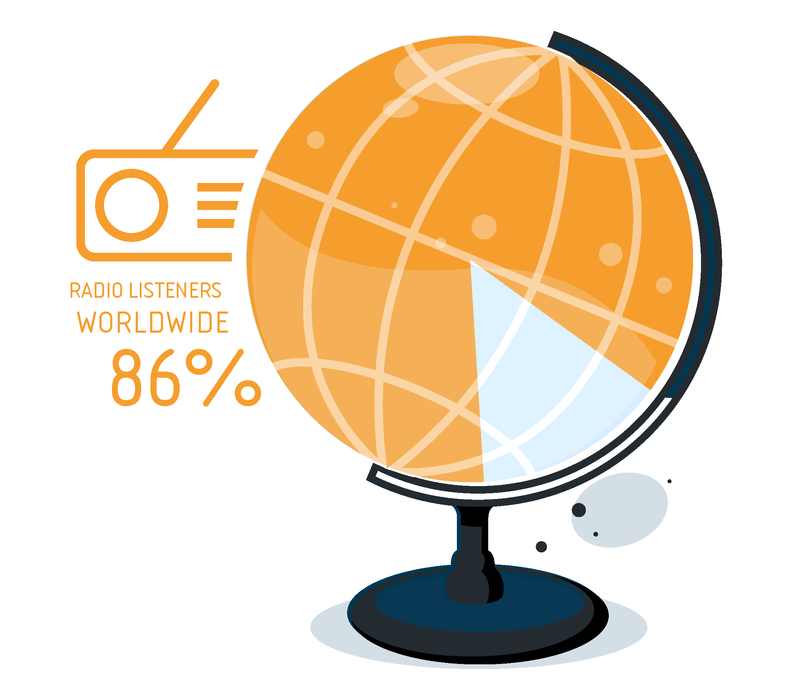
The development of radio pictures a technical breakthrough that is associated with a large cast of names. However, it is the Italian Guglielmo Marconi who is credited with the success of transmitting sound signals from one side of the Atlantic to the other dating back to the end of the 19th century.
A few more years passed though until the human voice could finally be transmitted. It was the start of a new period: radio became the forerunner of the information society. The first regular radio program was broadcast in Argentina in 1920 and was followed by stations worldwide. A world of possibilities opened up for news and entertainment as well as for advertising.
It may seem that classic radio has been pushed back by digital formats, especially in recent years. But even the enormous growth experienced by satellite and internet radio broadcasting is, nevertheless, far from replacing traditional radio. We looked at why classic radio is and will remain relevant for a tremendously large audience:
Classic AM and FM coexist with modern [[ podcast-audiocontent-monitoring could not be found. ]] and digital audio: there are 44,000 radio channels available worldwide, according to the UNESCO. These offer content for a very diverse audience: from religious channels to various music genres and pure news channels.
The reason why many digital stations still simulcast on FM is that a large sector of the population worldwide depends on its simplicity which allows access to information in people’s everyday lives. As market research shows, traditional radio audience prefer to listen to classic radio while driving – for example, while commuting or on the go somewhere; at home during the weekend, or to start their day by tuning in (Alter Agents report, 2020).

According to statistics, a record-breaking 99% of all US households have at least one radio device they listen to for an average of 102 minutes a day. Compared to other countries, this is relatively little; the average German listens to the radio for over 3 hours a day (Statista). In Spain, the percentage of FM listeners has been increasing since the 1980s and the status today is a stable 50% of the total radio audience (epdata).
Especially in developing countries, traditional radio is of great importance: 75% of households have access to it. Radio devices are affordable and do not require any complicated set-up. In areas with no sockets available, battery-operated models are used. In Latin America, there are more than 10,000 community radios available. In fact, the Brazilian radio market is the second largest after the US with 88% of all households using this source of information.
In general, radio – both traditional and digital – is the medium with the highest engagement potential. As studies have demonstrated, audience is highly receptive to it and act upon what they listen to, no matter the country.
Therefore - and for many other reasons - radio is still one of the most popular media outlets for advertising. Usually, advertisers receive information about ad presence and ad frequency directly from the stations or media agencies. But it’s not necessarily only the paid content that needs observation, for many businesses it is also crucial to understand their overall media presence and to be able to identify mentions - no matter if about themselves, competition or other industry-relevant topics.
In that case, media monitoring is the key. It offers detailed real-time insights about any topic relevant for the individual business case and can be carried out completely independently - whenever and wherever desired. Also, users who rely on providers specialized in monitoring audio or audiovisual content can choose from a wide range of media sources including digital formats as well as the more complex classic radio and even new media such as podcasts or social videos.
eMM provides media monitoring solutions for all kinds of different audio sources, customers can pick tailor-made plans to meet their monitoring needs. Worldwide or local, one medium or many, long- or short-term – eMM offers the perfect solution for any business. To find out more about the relevance of radio to your business simply leave us a message:
You might also be interested in:
Building an Effective Strategy: Ways to Boost Your Business by Monitoring the Media
[[ podcast-audiocontent-monitoring could not be found. ]]